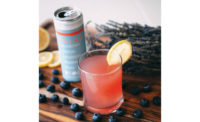Body-building Pizza? - April 2007

One of the leaders in whey protein and its use in functional foods, Hilmar Ingredients, offers Hilmar™ 8610 Whey Protein Concentrate for use in dough and Hilmar 8200 Whey Protein Concentrate for reduced-meat and -sausage applications. In addition to functional contributions, Hilmar Ingredients’ whey proteins deliver enhanced nutrition with a protein efficiency ratio (PER) of 3.2 and protein digestibility corrected amino acid score (PDCAAS) of 1.00.
Hilmar 8610 also helps improve the product qualities in applications such as pasta, protein bars, baked goods, meat and surimi. It can assist with texture modification, flour replacement in low-carb products and egg replacement. It has high heat stability and possesses strong gelling characteristics.
Hilmar 8200 excels at water-binding and gelling, making it suitable for meat applications. As an alternative to meat and soy ingredients, it improves a food’s cook yield, texture, flavor and juiciness. With a low GI and minimal carbohydrate level, it is an advantage in weight management foods. Its acid and heat stability are key in beverages.
According to data from the Centers for Disease Control, 17% of Americans were overweight in 2003-2004—triple what it was in 1980. Consumers, companies and political organizations are working to find ways to solve the issue.
New legislation is one tactic. For example, California Senate Bills 12 and 19, which set standards for at-school food and drink, say that a snack serving can have no more than:
- 35% of calories from fat.
- 10% of calories from saturated fat.
- 35% sugar by weight.
- 175 calories in elementary schools.
- 250 calories in middle and high schools.
In fact, most states have passed both school nutrition legislation and physical education legislation. Parents and health-minded consumers also are looking to the food industry to help provide solutions. (See chart “Parental Values in Snacks.”) Hilmar Ingredients understands children’s nutrition and commercial food science. It offers product developments using whey protein that meet the needs of food formulators and satisfies parents’ quest for good nutrition for their children.
For more information:
Hilmar Ingredients, Hilmar, Calif.
Gwen Bargetzi • 209-656-2582 • gbargetzi@hilmaringredients.com
www.hilmaringredients.com
Looking for a reprint of this article?
From high-res PDFs to custom plaques, order your copy today!




